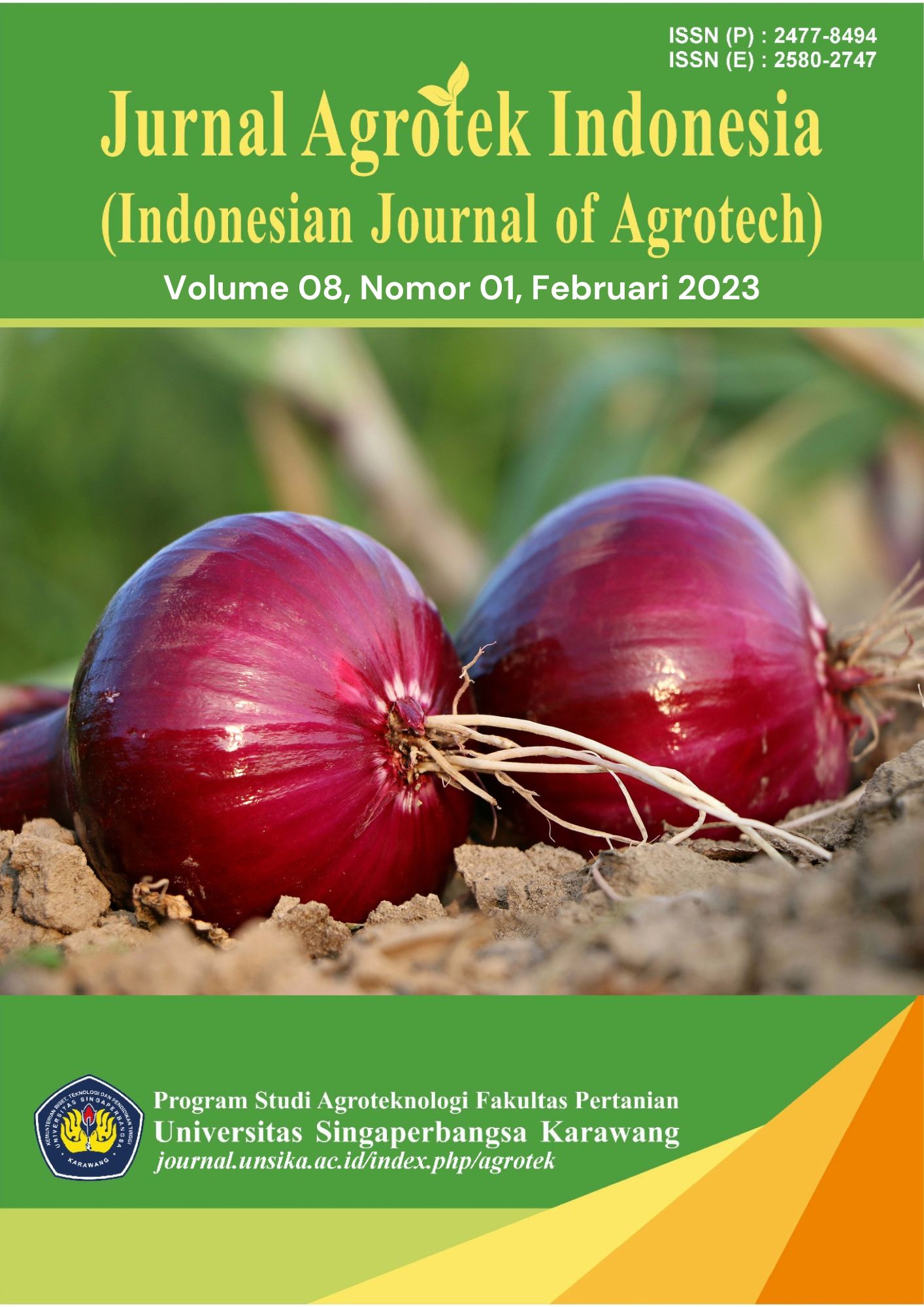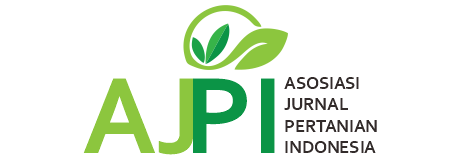The Effect of Various Organic Matters and Za Fertilizer in Double Digging Method on the Growth and Yield of the Lembah Palu Variety Shallot (Allium cepa L. Var. Aggregatum)
DOI:
https://doi.org/10.33661/jai.v8i1.8359Abstract
Shallot is a leading horticulture commodity in Indonesia that has long been intensively cultivated. Soil preparation by increasing soil fertility are technologies that can be applied to increase shallot yield. This study aims to determine the effect of the combination of organic matter and ZA fertilizer using the double digging method on the growth and yield of the ‘Lembah Palu’ variety shallots. This research was conducted in Sintuwu Lemba Village, Lage District, Poso Regency from February to June 2020. The study used a factorial randomized block design which consists of two treatment factors. The first factor was the use of organic matter (without organic matter, gliricidia leaves (Gliricidia sepium), banana stems, and rice straw) and the second factor was the dose of ZA fertilizer (without ZA and 400 kg/ha). This study concluded that there was a significant interaction between the types of organic matter and ZA fertilizer dosage in the double-digging method. The application of rice straw without ZA fertilizer in the double digging method gave the highest yield of 2.82 tons/ha. Rice straw as the organic matter gave the highest average growth and yield of shallots although they were not significantly different from gliricidia leaves and banana stems. The application of ZA fertilizer had no significant effect on the growth and yield of shallot.
Downloads

Downloads
Published
How to Cite
Issue
Section
License
Copyright (c) 2023 Yulinda Tanari

This work is licensed under a Creative Commons Attribution-ShareAlike 4.0 International License.








